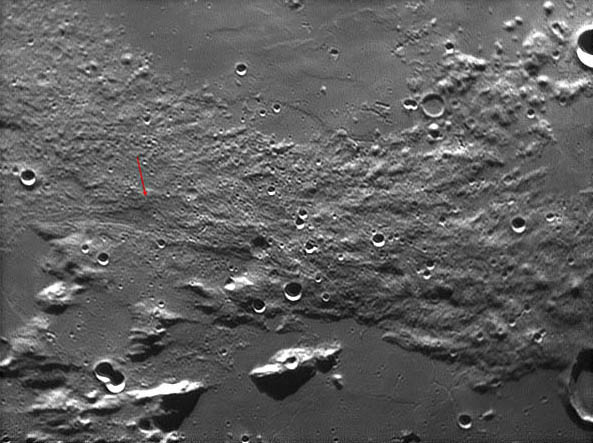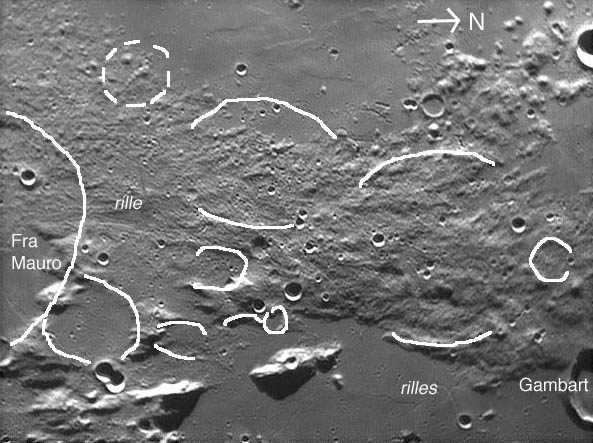March 2, 2016
Buried and Textured
Originally published May 7, 2005
Image Credit: Wes Higgins |
|
Buried and Textured The Apollo 14 landing site (red arrow) may be the least interesting feature in this image. The hilly terrain is ejecta from the impact that excavated the Imbrium basin and two things (actually many more, but only two today!) are fascinating about it. One is the obvious flow texture (in some places like a comb pulled across the surface) and the other is the tantalizing hints of preexisting craters engulfed by the ejecta flows. The flow texture shows that at least some of the Imbrium ejecta was ground hugging - it surged horizontally across the lunar surface from right to left. The white arcs and crude circles (mouseover) trace out some of the rims and partial rims of craters buried by the ejecta - you can probably see or imagine more! These craters are important in interpreting the rocks sampled at Apollo 14. The craters under the ejecta brought up rocks from deeper within the lunar crust and some of their ejecta is probably mixed in with the Imbrium ejecta. A strange rille-like feature is just north (right) of Fra Mauro and other tiny rilles (previously mostly visible only on Lunar Orbiter images) cut the maria south of Gambart. But the most remarkable feature in this image is slightly curved arc of domical hills of decreasing size at the top left of the image (white dashed circle). This looks like a turitella sea shell! The Lunar Orbiter IV image does not reveal what these bumps are, but does suggest that a crater on a cone occurs at the big end, allowing speculation that the entire feature is volcanic. Also peculiar is the small bright hill immediately to the left which is surrounded by an apron of material apparently sloping away. I hope that Danny Caes or some other Apollo image sleuth can uncover a high resolution Hasselblad or Metric camera image of this lunar turitella! Technical Details: Related Links: Yesterday's LPOD: A Handy New Map Tomorrow's LPOD: Splayed Rays |
|
Author & Editor: |
COMMENTS?
Register, Log in, and join in the comments.





